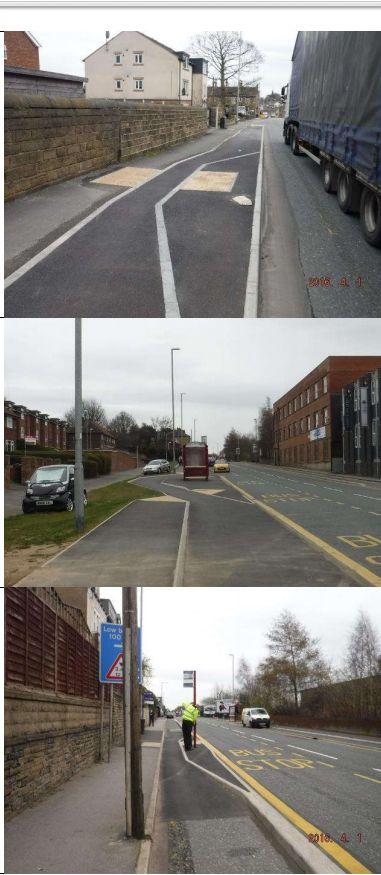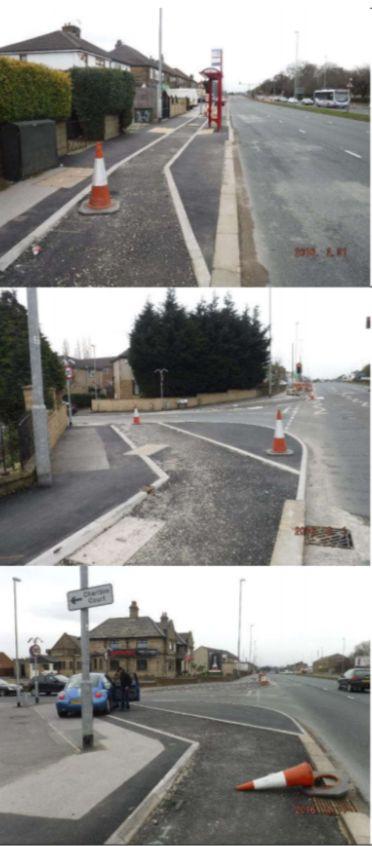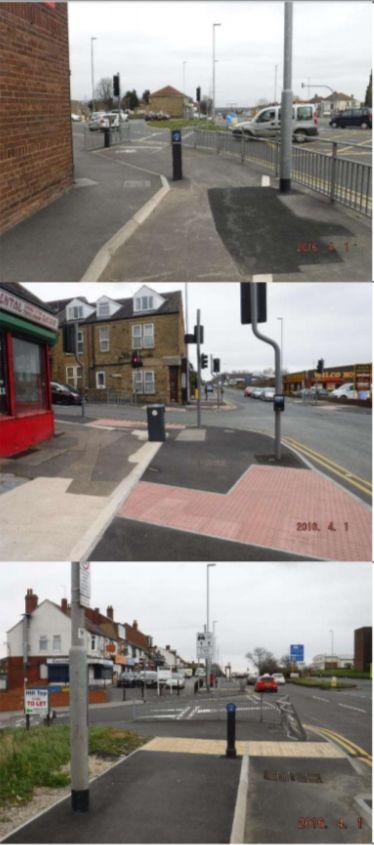- News
- Reviews
- Bikes
- Accessories
- Accessories - misc
- Computer mounts
- Bags
- Bar ends
- Bike bags & cases
- Bottle cages
- Bottles
- Cameras
- Car racks
- Child seats
- Computers
- Glasses
- GPS units
- Helmets
- Lights - front
- Lights - rear
- Lights - sets
- Locks
- Mirrors
- Mudguards
- Racks
- Pumps & CO2 inflators
- Puncture kits
- Reflectives
- Smart watches
- Stands and racks
- Trailers
- Clothing
- Components
- Bar tape & grips
- Bottom brackets
- Brake & gear cables
- Brake & STI levers
- Brake pads & spares
- Brakes
- Cassettes & freewheels
- Chains
- Chainsets & chainrings
- Derailleurs - front
- Derailleurs - rear
- Forks
- Gear levers & shifters
- Groupsets
- Handlebars & extensions
- Headsets
- Hubs
- Inner tubes
- Pedals
- Quick releases & skewers
- Saddles
- Seatposts
- Stems
- Wheels
- Tyres
- Health, fitness and nutrition
- Tools and workshop
- Miscellaneous
- Tubeless valves
- Buyers Guides
- Features
- Forum
- Recommends
- Podcast
 Leeds Bradford CC bus stop Credit Ken Spence
Leeds Bradford CC bus stop Credit Ken SpenceLeeds-Bradford cycle superhighway just 75cm wide in places
An £18m flagship cycling route that is just 75cm wide in places has been condemned as “hazardous” and a compelling case for national design standards, as images seen by road.cc show cycle tracks that force cyclists to give way at every side road, with bollards and railings along the way, at times sandwiched between parked cars and a narrow pavement.
The brand new Leeds-Bradford Cycle Superhighway, a 23km route linking the two cities, and paid for by government Cycle City Ambition Fund money, has proven a disappointment for campaigners who say the government’s lack of leadership on design standards is responsible for a route that puts cyclists into conflict with motor traffic, bus users and pedestrians along its length.
Ken Spence, a managing consultant at Transport Initiatives, an independent transport planning consultancy, is among those critical of the route, which he says demonstrates a fundamental reluctance to reallocate road space from motor traffic. He shared a number of photographs of the route with road.cc highlighting, among other things, narrow bus stop bypasses alongside narrow pavements.
He said: “Cycle Connect (CC) is OK in parts, but the whole is incoherent and in some places downright hazardous. The biggest losers from this will be pedestrians and bus users who are thrown into conflict with CC users at many bus stops.
“The attention to detail is woeful, all those abrupt angles and errant bollards. Also there seems to be no appreciation of how cyclists will get onto the CC from side roads, particularly turn right onto it. The thought seems to be that you’ll just materialise on it.”
Spence, who took a series of photographs highlighting some problems with the route, including a bollard placed in the middle of one of the cycle tracks, says cyclists using the route are forced to give way every 50m at side roads.
He has also raised concerns about cars parked along the route (above).
Cycling Minister, Robert Goodwill, has in the past said it is up to local authorities to decide on the standards of bike routes in their areas, but Cycling UK’s Policy Director, Roger Geffen MBE, says the Leeds-Bradford Cycle Superhighway shows why national design standards for cycle routes are needed.
Geffen said: "What we see in the Leeds Cycle Connect is a compelling case for national design standards to ensure that funds earmarked for cycling are not wasted.
"While the local authorities in West Yorkshire need to accept some responsibility, this is largely a failing of Government, which has so far refused to consider setting design standards to prevent bad and dangerous design.
"Cycling UK urges Ministers to learn from what London is now achieving. Transport for London is delivering iconic cycle superhighways, including one through Parliament Square, thanks to clear political support for sustained investment in high-quality cycling provision. Not only does the Government's Cycling and Walking Investment Strategy need a lot more than the 72p per person currently proposed investment in 2020, but also national design standards to ensure the money is well spent."
Geffen said he strongly disagrees with assertions from City Connect, the body in charge of delivering the government-funded scheme, that 75cm is wide enough for a cycle track.
Campaigners called for a safety review of the route a year ago after it emerged cyclists would have to stop and look for turning motor traffic coming from a fast-moving gyratory before proceeding across one of the junctions.
An Alternative Department for Transport blog post at the time, titled Bradford's Cycle Super Deathway(link is external), said of a junction off the gyratory: "The junction is dangerously designed – turning motor traffic has priority over the cycleway at side roads. The junction is unclear, people on foot and on bike are expected to look left as well as backwards to the right, simultaneously, and so the design is dangerous."
"This is exactly the type of design which all cycling campaigners hate, from the hardened road warriors who love mixing with motor vehicles, to those who dream of the stress-free cycling infrastructure in the Netherlands.
City Connect has been approached for comment.
Laura Laker is a freelance journalist with more than a decade’s experience covering cycling, walking and wheeling (and other means of transport). Beginning her career with road.cc, Laura has also written for national and specialist titles of all stripes. One part of the popular Streets Ahead podcast, she sometimes appears as a talking head on TV and radio, and in real life at conferences and festivals. She is also the author of Potholes and Pavements: a Bumpy Ride on Britain’s National Cycle Network.
Latest Comments
- espressodan 5 min 56 sec ago
Road.cc: "Cyclists are fed up of victim blaming"...
- Destroyer666 57 min 47 sec ago
Ahem, the recommended lockring is just a common through-axle specific lockring, so nothing Miche specific there, and the required tool for it is an...
- Destroyer666 1 hour 52 min ago
Nonono, not those, but those that have constructed Italian cars and motorcycles that have been driven to hundreds of race and championship...
- RoubaixCube 2 hours 1 min ago
This may well be the case although Im unaware of the brands popularity on their home turf. I used to see them being advertised more in the UK...
- qwerty360 2 hours 31 min ago
Arguably sticking it in a bank account is bad....
- Sredlums 3 hours 30 min ago
I'd counter that those brakes were in fact so inadequate that they eventually developed a whole new type of bicycle that was actually suited for it...
- levestane 3 hours 32 min ago
Unfortunately, Africa is heavily exploited both for resource extraction...
- CitizenSmith 3 hours 58 min ago
There seems to be no support for TOO) now - their email and website are defunct. They are inactive on Facebook. Aftter less than a year the rails...
- Laz 4 hours 56 min ago
I used to daily 1hr sufferfests on indoor rollers, I drank a fair bit of water before during, and after- I noticed my sweat wasnt stinging in my...
- matthewn5 5 hours 28 min ago
I did the four windows on my Victorian flat. I replaced the parting beads (between the panes) and the staff moulds with new timber ones that have a...



Add new comment
39 comments
£29 milion for the overall project, of which £1.6 million was for the towpath. All the budget data and the funding bid application and original design documents WERE on the website, but has mysteriously disappeared as part of the webiste upgrade
Well done Mr Spence for bringing this to our attention, but why did you take the photographs with a potato?
No surprise from the self styled "motorway city of the '70s ('80s, '90s, '00s, '10s)".
As a regular commuter into Leeds from Bradford, I so wanted this to work.
I have tried to remain positive despite the delays and the obvious design flaws. I'm currently using the Canal towpath upgrade despite the surfacing and sleepers designed to make the journey as difficult as possible.
Trouble is we know what will happen now, bad design will lead to lack of users, and the usual suspects will jump on this as a waste of money and it will be one step forwards, ten steps back.
I can only look forward to the day when the regular grid lock in Leeds doesn't clear before the next rush hour kicks in to bring the city to a complete halt.
I am orignally from Bradford and used to work in Leeds, so I know the area well and have cycle most parts of the route in the past. I think your right that the Bradford sections in paticular won't actually get much use apart from a few dedicated cycling commuters like yourself and a few school children and parents in places like Barkerend Road, apart from that I feel it will be unused most of the time. The section which appoaches or leaves Bradford city centre via Church Bank also suffers from poor junction design meaning that cyclists would have to stop at every turning just to make sure a car isn't pulling out into the CSH. It would therefore be easier to use the main carriageway. Church Bank is also very steep and sees few cyclists as it is, so I don't think many more will appear just because of this investment. As I've said before it would have been better to spend the money on a 4metre wide plus 2m pedestrian 'Dutch style' path along the Bradford Valley linking the city with Shipley rather than leaving it up to Sustrans and Bfd council to develop a piecemeal shared-use route in that location.
It is a waste of money...simple as. I would have much prefered to keep on the road and for LCC to fix the potholes with the cash
There have been comments about the design layout for a long time. Patchy, cobbled together. As mentioned a reluctance to give over Road space to provide a decent cycle way
I mean, gawd, what I wouldn't give for 75cm wide cycle lanes! One I use down here in t' South (I'm originally from Yorkshire, so I'm allowed to say that) is no more than 30 cm once you take out the weird cobbles which are against the kerb and then the double yellow lines.
No, no, no - you're missing the point: that IS the national design standard.
Pages